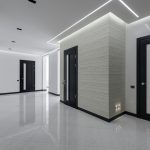Meeting UK Accessibility Laws and Standards for Apartment Access
Ensuring UK accessibility regulations are met is essential for residential apartment buildings. The Equality Act mandates that buildings provide reasonable adjustments for disabled residents, while Part M of the Building Regulations specifies technical requirements such as ramps, lifts, and clear door widths to ensure access. Compliance with these laws is not optional; it guarantees legal protection and promotes inclusivity.
Apartment owners and managers must carefully evaluate their properties against these standards. Failure to meet Part M compliance can result in legal consequences, including fines and potential lawsuits. Beyond legal risks, non-compliance may lead to tenant dissatisfaction and reduced property value.
Also to discover : Ultimate guide to safely transporting your classic car across the uk: stress-free tips for secure moves
Practical steps for compliance include conducting accessibility audits and consulting specialists familiar with the Equality Act and UK accessibility regulations. This proactive approach helps identify where modifications are needed and ensures that access routes, communal areas, and facilities within the building meet the required standards. Continuous monitoring and maintenance also play a crucial role in sustaining compliance and resident safety over time.
Essential Safe Stairway Features in UK Apartments
Safe stairways are critical in UK apartment buildings to meet stair safety standards and protect all residents. Installing sturdy handrails on both sides of staircases is a primary requirement, ensuring continuous support and comfortable grip. Handrails should be smooth and extend beyond the top and bottom steps for added safety.
Also read : Ultimate uk fish pond relocation handbook: a safe and essential guide
Incorporating tactile indicators at stair landings and edges helps visually impaired residents detect changes in level. These textured surfaces must contrast visibly with flooring to enhance recognition. Non-slip surfaces are equally vital. Applying slip-resistant treatments or mats reduces the risk of falls, especially in wet or high-traffic areas.
Upgrading stair lighting improves visibility significantly. Well-lit stairways, combined with visual alerts such as contrasting step edges, further prevent accidents. Maintaining these features through regular cleaning, repair, and safety inspections sustains ongoing stair safety performance.
In summary, prioritising stair safety with effective handrails, tactile indicators, and non-slip surfaces helps UK apartments comply with regulations and ensures secure movement for all residents, including those with disabilities.
Enhancing Elevator Accessibility in UK Apartment Buildings
Elevator access in UK apartments must comply with strict wheelchair accessibility requirements to meet UK accessibility regulations and Part M compliance. Lifts should provide sufficient internal dimensions, usually a minimum clear floor space of 1100mm by 1400mm, ensuring wheelchairs can enter, turn, and exit comfortably. Controls must be reachable from seated and standing positions.
Clear button labelling is essential for easy identification, complemented by both auditory signals and visual floor indicators to aid residents with visual or hearing impairments. These signals should announce floors and directions distinctly, increasing safety and independence.
Emergency communication systems inside lifts, such as alarms paired with visual alerts, ensure rapid response during incidents, fulfilling Equality Act mandates for reasonable adjustments.
Regular inspection routines verify that lifts remain operational and safe. Scheduled maintenance not only extends elevator life but meets building standards, preventing regulatory violations. Incorporating these features guarantees inclusive mobility solutions, supporting all residents’ accessibility needs effectively.
Inclusive Design Strategies for All Residents
Creating an accessible apartment building requires inclusive design that serves all residents, including older adults and those with disabilities. Universal access hinges on designing access routes that accommodate varied mobility needs. This includes implementing step-free access to entrances and communal areas, significantly easing movement for wheelchair users and those with limited stamina.
Door widening is another crucial adjustment, ensuring that doors meet minimum width standards for wheelchair passage under UK accessibility regulations. Wider doors prevent bottlenecks and enhance safety during emergencies.
Resting areas with seating along corridors or in communal spaces provide necessary pauses for residents who may tire quickly. Incorporating clear wayfinding signage with simple, high-contrast graphics helps all residents navigate effectively, reducing confusion and anxiety.
By addressing these elements, inclusive design fosters independence and comfort for everyone, meeting both the intent of the Equality Act and Part M compliance requirements while creating welcoming living environments. These strategies also anticipate the varied and changing needs of residents over time, making accessibility a sustainable priority rather than a one-time fix.
Addressing Common Challenges in Accessibility Upgrades
Retrofitting existing apartment buildings to meet UK accessibility regulations presents significant accessibility challenges. One major issue is building constraints such as limited space and structural elements that restrict modifications like installing ramps or widening doorways. Careful planning is essential to work within these physical limitations while ensuring Part M compliance.
Cost considerations also play a critical role. Upgrading access features can be expensive, especially when dealing with older buildings requiring extensive alterations. Prioritising essential improvements helps manage budgets effectively—focusing first on elements that deliver the most impact for resident safety and legal compliance.
Balancing heritage preservation with modern accessibility demands is another common challenge. Buildings with historic status may have restrictions on modifications, requiring sensitive design solutions that respect original aesthetics while enhancing accessibility.
Addressing these challenges requires collaboration with accessibility experts, architects, and legal advisors familiar with the Equality Act and UK accessibility regulations to create feasible, compliant upgrade plans that respect building integrity and resident needs.
Meeting UK Accessibility Laws and Standards for Apartment Access
Understanding UK accessibility regulations is crucial for apartment owners to ensure full Part M compliance and adherence to the Equality Act. The Equality Act legally requires reasonable adjustments that prevent discrimination against disabled residents, compelling property managers to integrate inclusive access features. Meanwhile, Part M of the Building Regulations sets specific technical building standards, including minimum dimensions for doors, ramps, and lift access routes, guaranteeing practical accessibility.
Failure to comply with these standards exposes property owners to legal penalties such as fines or lawsuits, and risks tenant dissatisfaction and reputational damage. Therefore, continual assessment against these laws is necessary, especially as regulations evolve or buildings undergo refurbishment.
A robust approach includes conducting thorough accessibility audits guided by the Equality Act and Part M requirements. These evaluations identify gaps in compliance and help prioritise improvements. Reliable compliance not only protects legal interests but also enhances the living experience for all residents by fostering inclusive, accessible environments.
Meeting UK Accessibility Laws and Standards for Apartment Access
UK accessibility regulations require apartment buildings to meet both the Equality Act and Part M of the Building Regulations. The Equality Act mandates reasonable adjustments to prevent discrimination against disabled residents, ensuring equal access throughout communal and private areas. Part M compliance provides detailed building standards specifying minimum dimensions for ramps, doors, and lift access to accommodate various mobility needs.
Compliance is crucial: failure to follow these legal requirements can result in penalties ranging from costly fines to legal action against property owners or managers. Moreover, non-compliance can damage a building’s reputation and reduce tenant satisfaction. This highlights the importance of ongoing assessments to ensure buildings keep pace with evolving regulations.
Regular accessibility audits help identify gaps in compliance with UK accessibility regulations and Part M compliance. These audits guide improvements, from widening doorways to installing suitable ramps or lifts, directly addressing requirements from the Equality Act. By prioritising these measures, apartment owners can safeguard legal standing while providing inclusive, accessible environments that benefit everyone.



